Published 22/09/2021
Bridgeman Images is proud to announce the representation of the Estate of Carlos Cruz-Diez (1923 -2019).
Acclaimed Venezuelan artist Carlos Cruz - Diez was a member of the Op Art movement whose work focuses on the kinetic energy of colour. He believed Op Art was ''a movement that continuously depicts the instabilities of reality''. During his career, Carlos Cruz-Diez used diverse methods to highlight colour in his works, yet at the age of 80, he shifted his approach and began using computers to further his research. Today, he remains one of the most influential and innovative artists of the 20th century, while his research on colour continues to be passed on to younger generations through educational programmes at the Cruz-Diez Art Foundation. His works have been showcased at the MoMa, the San Francisco Museum of Modern Art, the Museum of Latin American Art, The Museo de Bellas Artes in Caracas, and others, as well as in independent galleries all over the world.
For this 2021 interview, our artist manager had the pleasure of speaking to Adriana Cruz Delgado, daughter of Carlos Cruz-Diez and President of the Cruz-Diez Art Foundation. The foundation have recently added over 60 new images to the Bridgeman Images archive.
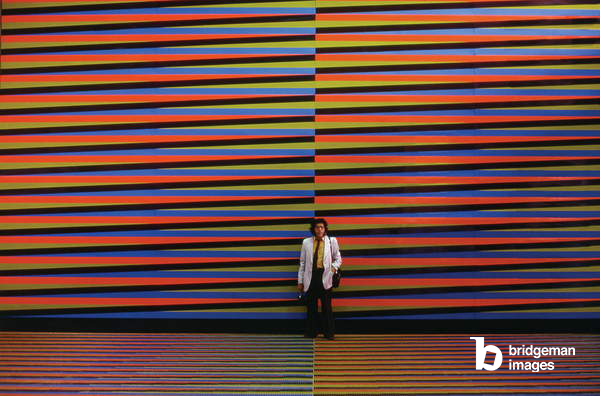
1. Carlos Cruz-Diez originally trained at the School of Fine Arts in Caracas and started out as a social realist painter drawing attention to the political conditions of the working class. What brought him to start his explorations in colour and light?
From a very young age, my father wanted to be an artist, a painter. He was almost 17 years old when his father enrolled him at the School of Fine Arts in Caracas, Venezuela, but warned him that it was a serious profession and great responsibility. There he received academic training and was told at school that artists were witnesses of their time. As he was worried about the situation in his country, he thought it was his duty to paint what he saw around him, poverty and social distress, as an effort to raise awareness and influence social change. But, he was soon disenchanted with this idea because the positive results were only to himself; he was selling his works rather well, but there was no less poverty around him, there was no real change.
So he decided to continue exploring new ideas and focused on what he really loved about painting, which was simply applying color. Among all the things in art that he could explore, he decided to focus on color. So he studied all he could, either philosophical, physical, artistic, or even theoretical, and discovered he could contribute something new to it. This led him to Europe, where he discovered other revolutionary ideas that encouraged his exploration of color as an autonomous reality.
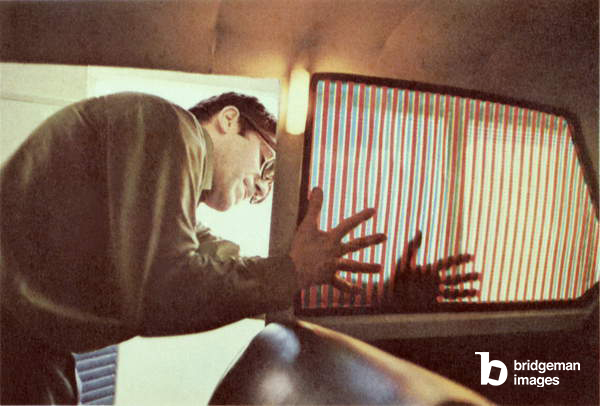
2. How did his move to Paris affect artistic practice?
When he arrived in Europe, he first settled in Spain in 1955. He returned for a period of time to Caracas before finally settling in Paris in 1960. When he first arrived in Spain, he had the opportunity to visit museums and finally encounter the works he had studied only in books that were sadly in black and white. In a way, this first trip was a rediscovery of art history. When he visited el Prado and saw the Meninas, it was a revelation for him. The painter, Velazquez was inside his painting and seemed to be looking at the viewer. It was clearly a new concept. So he came to the conclusion that famous artists in the museums were there not only because they were good painters but because they had contributed something new to art history. He had sort of a eureka moment, and he concluded that as an artist, he needed to invent something new, invent a new concept, a new artistic language for his works.
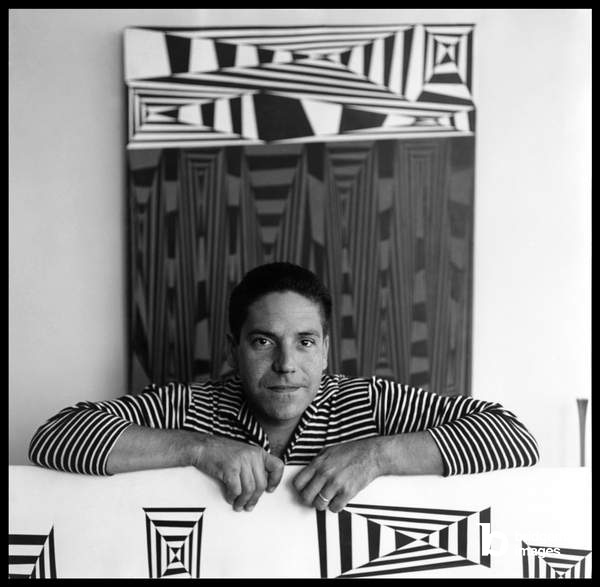
While in Paris, after visiting the exhibition Le Movement at the Denise René Gallery in 1955, he was only encouraged further. All the international artists that gathered in this city at the time were, like him, interested in finding new ways to create art. Once back in Caracas, he continued his work on the behavior of color and developed his theory on color setting, in the late 50’s, the basis of his artistic discourse. As such, I would say that his move to Paris served as the confirmation that he was on the right track, all but that he needed to dive deeper, to confront and exhibit his work in an international milieu.
.jpg)
3. What was his favourite time of the day to be in his studio?
For my father, the studio and house were one and the same thing. To him, an artist needs to live in art, so there was not really a time of day to be creative or a time to not be. He wanted to be both an artist and a family man, without having to privilege or sacrifice either. He wanted no difference between these two worlds, and as a happy result of this is that, to this day, his family remains deeply involved in his work and now his legacy.
.gif)
4. From 1959-2010, Cruz-Diez produced hundreds of Physichromies in different sizes, shapes and colours. The structure can be considered something between a painting and a sculpture, and is largely considered Cruz-Diez’s seminal work on colour. Which is your favourite work from this series?
Unlike other artists that work with series or periods, my father developed eight lines of research that he developed simultaneously throughout his career. After 1959, the turning point, he kept building and enriching each of those lines of research, introducing new materials, new technologies, or simply coming up with new ideas up until his passing. For him, his research represented eight different ways to bring color and its behavior into play, always finding something new. The Physichromies are one of these lines of research; he always referred to them as “structures” because indeed they are at a crossroads between a painting and a sculpture, as like with the latter, they require the viewer's movement along with it in order to reveal its true colors, literally.
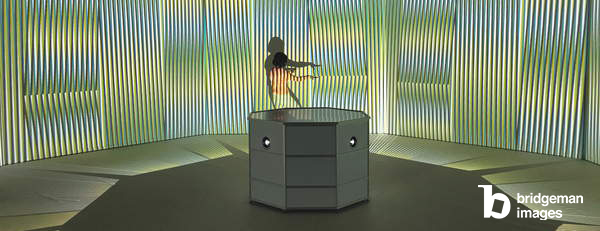
This hybridization between a painting and a sculpture is his response to explore further the limits of bi-dimensionality, the classical limits of painting that were constantly questioned by him, and many other artists trying to break from the classical form and explore other possibilities to make a painting. It was a push to a certain tridimensionality because to create a colored atmosphere in front of the painting, he included what has been called “traps for light”. That’s why he would refer to them not as a canvas but as a support for chromatic phenomena. Not the tale of something that already happened but something that is happening in the present time. They are a lot that could be my favorite, as I almost love them all very much; but if I had to pick one, it would be amongst the ones in my private collection at home, because the harmony of the colors is the one that touches me the most. The particularity with my father’s work is that you create a deep emotional relationship with them because the world of color is entirely subjective.
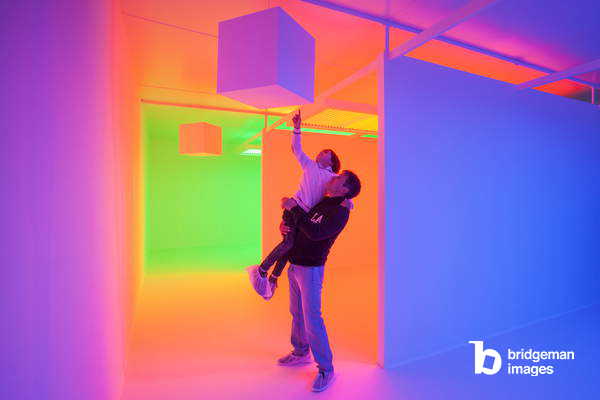
5. Cruz-Diez considered Chromosaturation to be the synthesis of his extensive research in colour. Can you explain the method and philosophies behind this series?
As I mentioned before, in each of the eight lines of research my father developed throughout his career – Couleur Additive, Physichromie, Induction Chromatique, Chromointerférence, Transchromie, Chromosaturation, Chromoscope, and Couleur à l’Espace - he deals with a particular condition of color in each. Each of them has a particular way to show color in the making. But, ultimately, the intention behind all of them would be to liberate color from form.
As you say, the Chromosaturation can be considered a synthesis of his work in the sense that it allows just that: to experience color beyond the confines of a form. To be able to walk through colored chambers is as close as he ever got to that. While there is always a support (walls, lights, etc.), the purpose of Chromosaturation is that inside its chambers, we can experience color without the encumberments of anecdotes, references, symbols, present or future. But as a present reality that evolves in time and space where we can all have a very particular and personal experience of it.

6. In 1969, the City of Paris invited Cruz-Diez to exhibit a Chromosaturation wherever he wanted. He chose the subway at the Place de l’Odéon in the Latin Quarter, why did he choose this particular place?
Even though he abandoned his work as a social realist painter, he was always deeply interested in the city as a subject and our interactions with it. This was always a topic of interest for him, and while he was not able to completely change our reality, he could, through this kind of work, bring us closer to art in a way, we can all enjoy. Since the late 1950s, he has applied his research on color to urban spaces by producing large-scale participative artworks that introduce new visual stimuli into the urban landscape. Conceived as an invitation, perhaps a dialogue, these works confirm that art is not something unattainable, something reserved only for museum or gallery spaces; particularly for Cruz-Diez because focused as he was on color and the experience of it, placing works on the street was his way to invite the public in a more flagrant way to discover and experience it. So, to answer your question, the street, in general, was a favorite of his, and it wouldn’t surprise me if he chose the Carrefour de l’Odéon for a simple reason: it’s a crossroads, and many people go through it. It was a fantastic location in this sense because there collided different types of people ranging from students, office workers, families, children, etc., all of whom he could surprise and invite to discover something new, see their city differently.
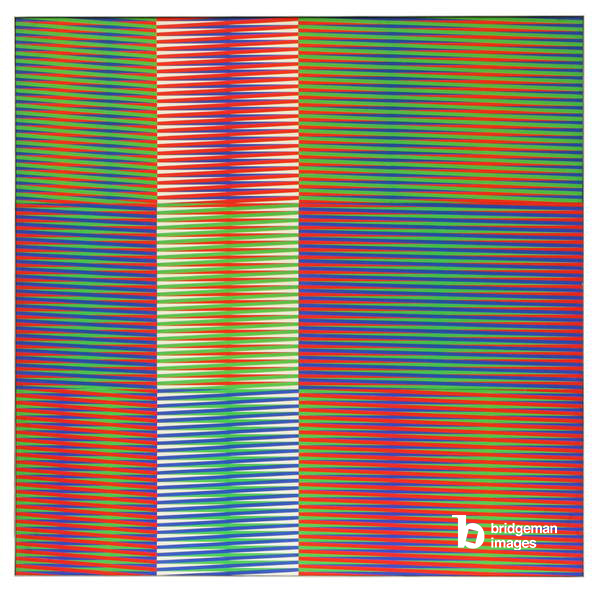
7. What do you feel is his most important work from his seven decade career?
I would have to say that his most important works are his architectural realizations, as these were the opportunity for him to work on a different scale and to physically apply his artistic research into a functional and permanent reality. Their importance relies on their diversity, so it is extremely hard to pick just one, as they are all singular in their own way. The Ambientación Cromática at the Simón Bolívar Power Plant in Guri, Venezuela, is just an example of his ability and desire to bring art and color to everyday spaces but to also find practical and aesthetical solutions to the functionality and purpose of the building. The same could be said for the Couleur Additive walls and floor at the Maiquetía international airport that has now become a symbol of hope to the Venezuelan diaspora.
There are more than a hundred examples of this type of work, and their variety is astonishing: they range from concert halls to banks, from churches to boats, from stadiums to gardens...
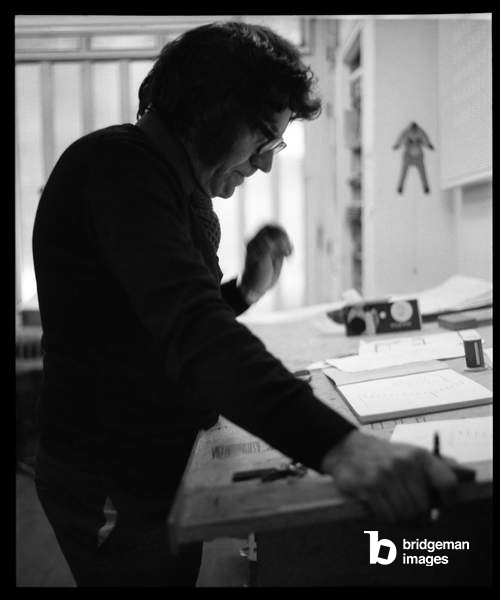
8. Finally, which other artists influenced Cruz-Diez?
My father applied a scientific approach to his art; as such, he was very curious and studied all of art history and the artists that changed the course of it. He deeply admired Velázquez for his ground-breaking use of space that pushed the limits of perspective beyond the canvas; the Impressionists for their applied research into the ever-changing quality of light that introduced the notion of the passing of time into art; but also, the color theorists like Chevreul, Newton, Goethe, Itten, and Albers among many others. He studied all of their writings and conclusions about color to construct his own theories and plastic discourse. In turn, in the course of his almost 96 years of life, he felt privileged to meet young artists who were influenced by his work and color theories. With some of them, he even had the chance to meet and exchange ideas. While he didn’t want himself to have an academy of followers doing something similar to his work, he always hoped to have opened the door to new realities and concepts that could be as valuable to younger generations of artists as the older painters were to him. As such, I would say that that is his most important work of all: his own contribution to art history and the permanent change he operated in the way we perceive color in art.
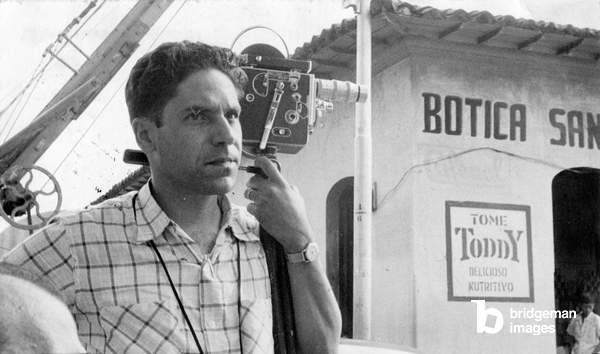
The Cruz-Diez Art Foundation
The Cruz-Diez Foundation is a non-profit organization committed to foster the study and appreciation of Carlos Cruz-Diez’s life and work. Created in Houston, USA, in 2005 at the artist and his family’s initiative, the Cruz-Diez Foundation ensures the continued existence and the transmission of Cruz-Diez’s legacy through research, exhibitions, and educational programs worldwide.
We wish to thank Adriana Cruz Delgado for her contribution to this article.
Discover the work of Carlos Cruz-Diez and related images in the Bridgeman archive.
Carlos Cruz-Diez Foundation collection
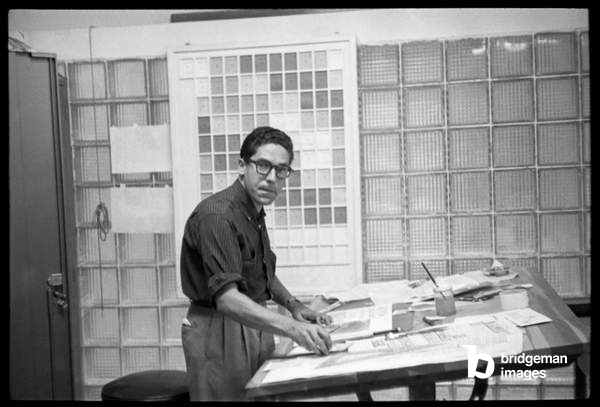
If you have any enquiries about Carlos Cruz-Diez licensing or copyright please contact us.


